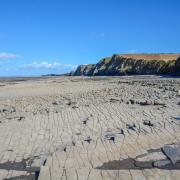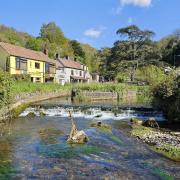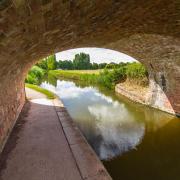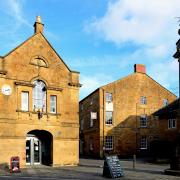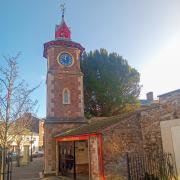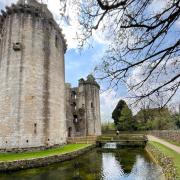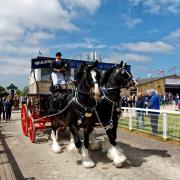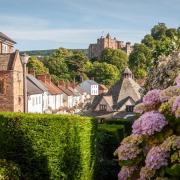Bernard Bale takes a quick tour of some of the strangely-named Somerset villages that are surely worth a visit.
1. Tinker’s Bubble
Tinker’s Bubble, which is not very far from Yeovil, conjures up all kinds of strange images and explanations. The reality is that, unlike most villages, it does not have a heritage spanning centuries but has only been in existence since 1994 when about 40 acres was set aside to create a WOOF community.
It is about half woodland and half farmland with the emphasis on eco-friendly life. Woof is the World Wide Opportunities on Organic Farms organisations and has such communities dotted around the globe. Tinker's Bubble can be found at Norton Covert in Little Norton near Yeovil and you will be hard pushed to find a nicer bunch of people.

2. Catsgore
The oddly-named Catsgore sounds medieval and it really is – plus some. There are mentions of Catsgore in ancient books and the name means, it is agreed by scholars, the place where wild cats live. It is not far from Somerton which is itself between Yeovil and Taunton and steeped in history as the one-time ‘county town’ of Somerset. It is a picturesque part of the county and must be worth a selfie to add to your collection. You will probably not find any warning signs of wildcats though. They packed their bags centuries ago and left for Scotland.
3. Queen Camel
Somerset does not have a rich heritage of camels so how did Queen Camel get its name? Experts believe that it is all to do with the Celtic influence because about 1,000 years ago it was known as Cantmael which actually means ‘bare hill district’. Queen Camel can be found about seven miles north of Yeovil on the A359 or, if you are travelling by boat, along the River Cam. The ‘Queen’ part of the name is believed to have come from the wife of Henry III, Queen Eleanor, who was the principal landowner in the area during the 13th century.
4. Sticklepath
Sticklepath is to the south-east of the county close to the border with Devon. The name conjures up images of sticklebacks, those little fish we loved to collect in jam jars but it has nothing to do with them. It is not a large place but it has a history, having been on a main thoroughfare through the county and thus enjoying a certain standard in trading. That road through was modernised several times as traffic grew through the centuries but originally it was just a very steep path which accounts for its name of Sticklepath. Go and see for yourself close to Combe St Nicholas near Chard
5. Simonsbath
We all know what a bath is, but how does it get to appear in the name of Simonsbath which is a delightful little village on the Somerset part of Exmoor? Ask local people when you visit but here to give you some insider information, the bath bit was originally baeth, old English for a pool of water, perhaps a watering hole. There is a lot of debate about Simon with many suggesting that it is a generic name given to one or two outlaws of the 17th century. With or without the outlaws, take a look at this picturesque part of the county and enjoy.

6. Chedzoy
What is a zoy? It is an island and there are several to be found on the Somerset Levels. How can you have an island surrounded by land? Well Chedzoy is a classic example of this and also well worth going to see. It sounds almost Russian or Ukrainian but Chedzoy is very English and very Somerset. The word ‘zoy’ does indeed mean an island and about a thousand years ago Somerset Levels were mostly underwater apart from these small islands of various sizes. Ched was believed to be the owner of the particular island we now know as Chedzoy. See for yourself, you don’t have to have a boat to visit this island.
7. Curry Mallet
How on earth did such an old Somerset village get called Curry Mallet? Well, let us establish where it is first of all. It is actually seven miles to the east of Taunton on the lovely Fivehead River. Let us also establish that it has nothing to do with being the curry centre of Somerset Sorry if this is disappointing but the ‘Curry’ is really ‘Cory’ and simple old English for village. The Mallet bit is a family name and quite famous since William Malet, the then Lord of Curry Mallet, was one of twenty five barons elected to act as guarantor of the Magna Carta in 1215.
8. Nempnett Thrubwell
There are so many curious and quirky village names in Somerset ranging from Coat, which is not far from Yeovil, to Temple Cloud between Wells and Bristol and a fascinating village with links to the mysterious Knights Templar. However, they cannot all be listed here but are worth touring this magnificent county to witness firsthand.
There is one other village we simply must highlight though and that is the delightfully named Nempnett Thrubwell.
Even the ever-popular Wurzells could not resist singing a song about this village – ‘Down in Nempnett Thrubwell’. It is not only a picturesque must-visit village which can be found fairly close to Bath but it has quite a story to tell, both ancient and modern.
The name has explained as a combination of Celtic and old English and translates as ‘the grove by the well’. That is only part of the story for modern Nempnett Thrubwell – Plaster’s Green Meadows – which is designated as a Site of Special Scientific Interest due to its quite unique meadowlands which support a very rare range of grasses.
Add to that the village’s involvement in the English Civil War and you have an area that is not just of scientific but also of historic interest.
We haven’t even mentioned the Fairy Toot yet. What is that? Pay a visit and the friendly local people will be only to pleased to tell you all about it – and maybe show you too!

There is little doubt that Somerset has a lot of amazing villages which are not just quirky but totally fascinating.




